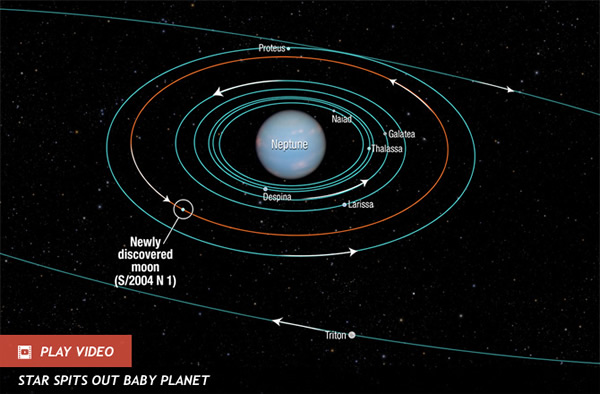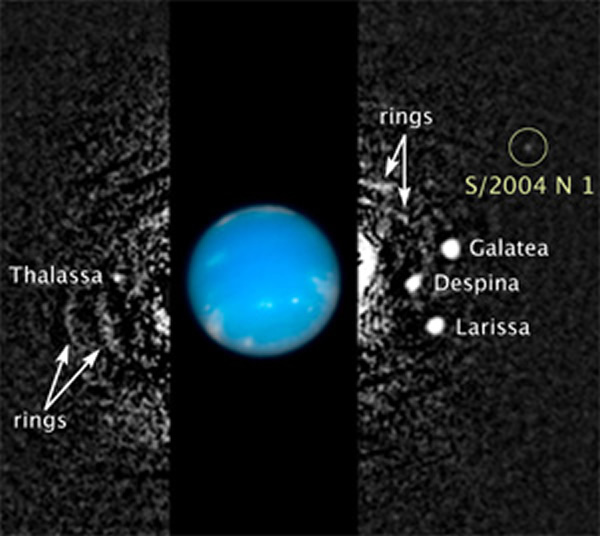Hubble Discovers New Neptune Moon
Hubble Discovers New Neptune Moon
Astronomers using the Hubble Space Telescope have found another moon circling Neptune, a giant planet located about 30 times farther away from the sun than Earth. The new moon was too small to be noticed by Voyager 2′s cameras when it completed its flyby of the planet in 1989.
This composite Hubble Space Telescope picture shows the location of a newly discovered moon, designated S/2004 N 1. Credit: NASA, ESA, and M. Showalter (SETI Institute)
The newly found moon, temporarily designated S/2004 N 1, brings Neptune’s orbital brood to 14. With an estimated diameter of no more than 12 miles, the new moon is Neptune’s smallest.
S/2004 N 1 is located about 65,400 miles from the planet, between the orbits of sister moons Larissa and Proteus, and it circles Neptune about every 23 hours.
Credit for the discovery goes to Mark Showalter, with the SETI Institute in Mountain View, Calif., who was studying archived images of Neptune taken by the Hubble observatory between 2004 and 2009.
He was analyzing about 150 images to learn more about faint ring segments circling Neptune, when, on a whim, he looked beyond the rings and noticed a white dot. That turned out to be the new moon.
No immediate word on what its new name may be.
Image: This diagram shows the orbits of several moons located close to the planet Neptune. All of them were discovered in 1989 by NASA’s Voyager 2 spacecraft, with the exception of S/2004 N 1, which was discovered in archival Hubble Space Telescope images taken from 2004 to 2009. The moons all follow prograde orbits and are nestled among Neptune’s rings (not shown). Credit: NASA, ESA, and A. Feild (STScI)(Jul 15, 2013 04:22 PM ET // by Irene Klotz)













